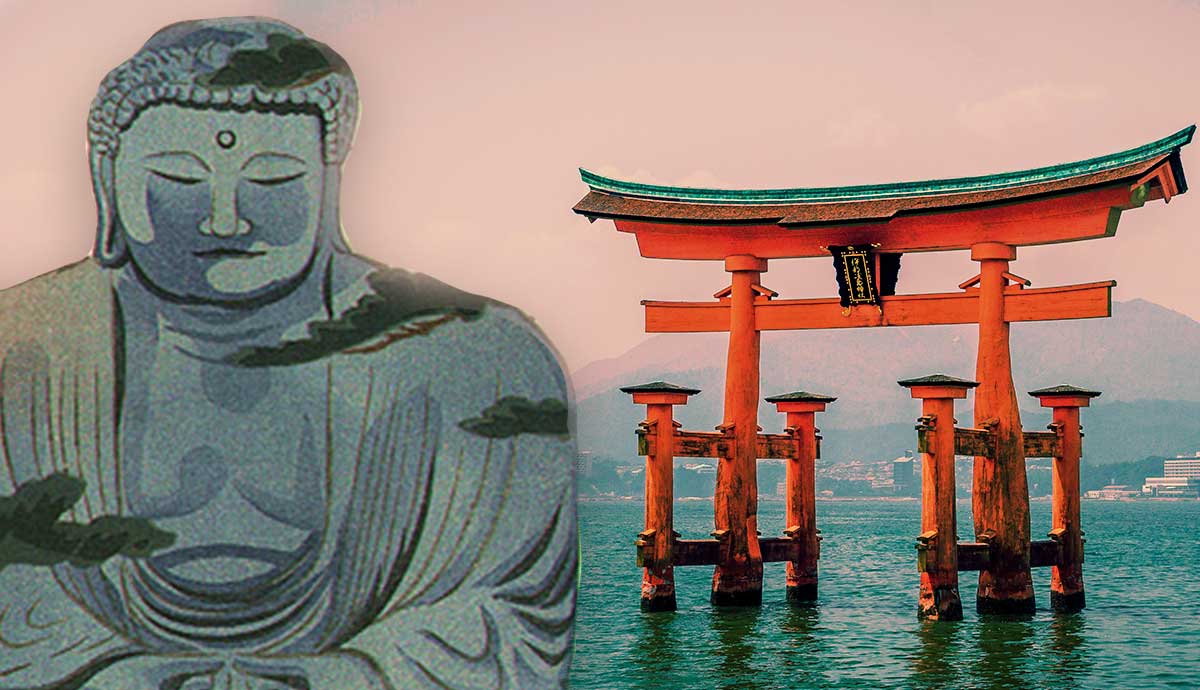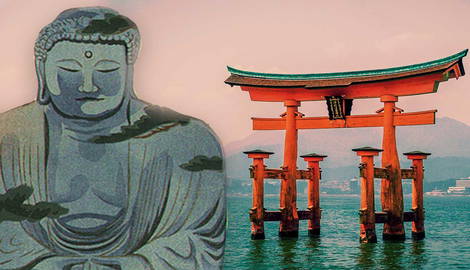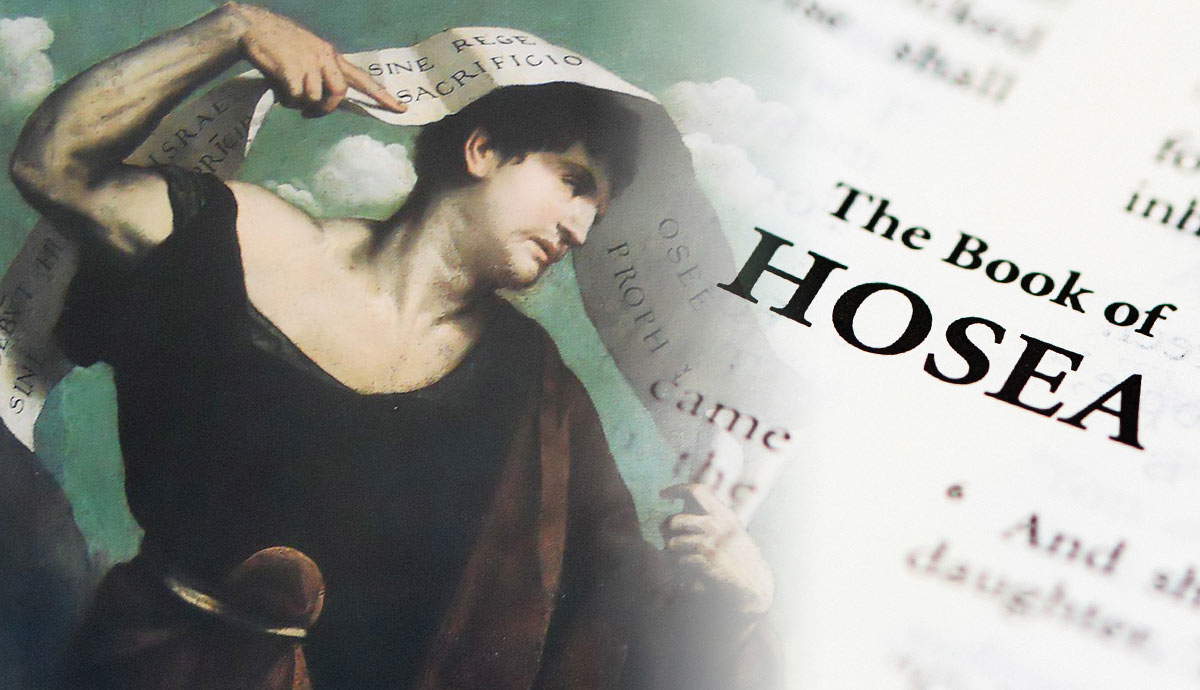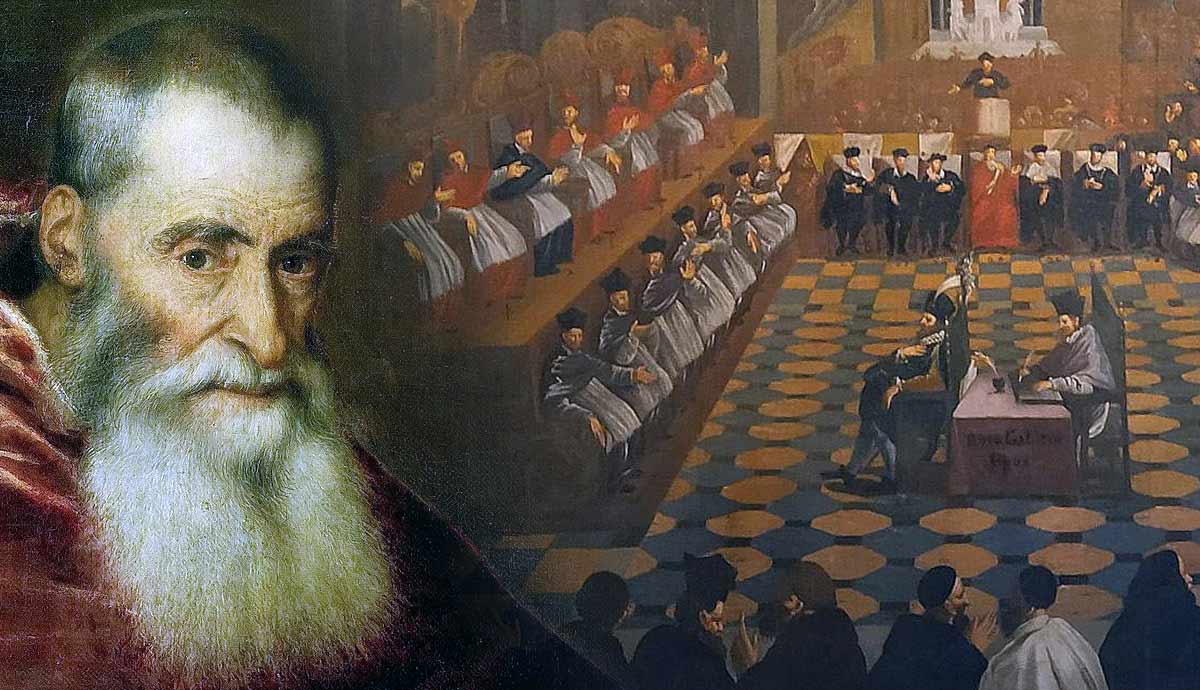
The religious beliefs of any society both reflect and underpin the daily lives of people from all walks of life. When one culture assimilates another, there is often conflict between old and new beliefs. Japan has a long-established tradition of taking elements from other cultures and making them their own. Buddhism, the dominant religion of China, and Shinto, the indigenous folk religion of Japan, were able to meld together more easily than you might expect.
The term “shinbutsu shugo” means “combination of kami and Buddha.” While a detailed explanation of Buddhism requires far more than a single article to do it justice, we’ll touch on the basic beliefs and how the different classes in medieval Japan followed this syncretized faith.
Shinto

Shinto is the collection of folk tales and rituals native to Japanese belief, most of which are written in the Kojiki and Nihon Shoki. It is an animistic belief system centered around the worship of the kami, or spirits, that permeate everything in Shinto. It stresses cleanliness, reverence for nature, and ancestor veneration, but does not concern itself much with the idea of an afterlife. Shinto is about existing in the material world and dealing with the practicalities of doing so.
Every object, place, person, or concept in Shinto has a kami associated with it, and offering them proper respect is the key to prosperity. One might worship at a shrine of Inari, the kami of fertility, to have a good harvest, for example. Humans could sometimes become kami—Empress Jingu’s son Hachiman who ascended to become a kami of war stands out most prominently—but Shinto does not teach that humans should aspire to such.
A Primer on Buddhism

Buddhism is, at its core, a philosophy of accepting the impermanence of things. Nothing lasts forever: friendships, relationships, jobs, both positive and negative circumstances, and life itself have their appointed span. Unwillingness to accept the fleeting nature of temporal happiness, in Buddhist philosophy, leads to suffering, which all beings will eventually experience through many reincarnations until they attain Nirvana through enlightenment. Beings such as gods exist, but they too are subject to this cycle of death and reincarnation, which is depicted in the image above: the six segments of the wheel are occupied by denizens of the different realms of existence. These denizens are humans, demigods, gods, ghosts, demons, and animals.
The goal of Buddhism of the Mahayana (Greater Vehicle) branch is for practitioners to become Bodhisattvas — those who have become enlightened but retain their identity in order to help others along the path to Nirvana.
This comes from following the Noble Eightfold Path taught by Siddhartha Gautama, which instructs followers in the way to conduct themselves: right view, resolve, speech, conduct, livelihood, effort, mindfulness, and focus.
The Beginnings of Japanese Buddhism

Buddhism first arrived in Japan via traders from the mainland, because it was a major influence on Chinese culture. Around 552 CE, emissaries brought gifts to Emperor Kanmei as a gesture of good faith and an attempt to start diplomatic relations between Japan and Goryeo (Korea). The Emperor decided to consult with his advisors, and it was agreed that the Soga Clan would try the new faith as a sort of trial run. The other advisors feared that the fortunes of the country would decline if they turned away from the kami.
The real driving force behind the explosion of Japanese Buddhism was Prince Shotoku, according to the Nihon Shoki. As regent to Empress Suiko, Shotoku was a devout Buddhist and sought to emulate China; at the time, China was considered the pinnacle of culture and progress in East Asia. The decentralized government of Japan, through Shotoku’s efforts, eventually became a merit-based bureaucracy similar to that found in China, in their efforts to emulate the celestial bureaucracy. The Imperial court funded and sponsored the construction of numerous Buddhist temples, wherein rituals such as the recitation of sutras were conducted to secure the prosperity of the nation.
In order to ease the transition and pay respects to both faiths, existing Shinto shrines often would have Buddhist temple complexes built adjacent to them; kami, according to the doctrine of Buddhism, were just other beings.
The Role of the Buddhist Clergy in Japan

As Buddhism spread in its various schools throughout Japan, the clergy took a more prominent role in society. Education and literacy were prized virtues, which went hand-in-hand with Confucianism. Part of the education provided by the temples included the Chinese classics, the ability to read and write, and how to do arithmetic which meant learning to use an abacus. Temples were sponsored by the local daimyo and paid for through taxes — the temples themselves were tax-exempt, and as such, quickly became influential and powerful forces in society.
Although monks are often stereotyped as ascetic hermits, Buddhist monks in Japan took a prominent role in shaping society. In addition to education, politics, and maintaining the temple complexes, Buddhist monks also aided in public works like building roads and developing land, providing food and shelter to those needing it, and holding prayer rituals. Monks could also act as witnesses for weddings and funerary rites.
As the temples gained more power and influence, they became able to draft quasi-military forces. The warrior monks known as sohei would lend their strength to the daimyo who supported their temple, or help to oust him if they felt his aims did not further the cause of Shinto-Buddhism.
Everyday Life for Peasants

A common saying about religion in Japan is that one is born Shinto and dies as a Buddhist — this refers to the adherence that people have to both faiths. Shinto rituals are said to be used for the more joyous occasions of life such as birth and marriage, while Buddhism is for more somber occasions such as funeral rites. Of course, this is a simplification but it illustrates the idea. Japanese families were historically required to register at the local temple in order to keep accurate records of births and marriages, and they were also required to be affiliated with a temple. Part of their taxes were intended to support this temple.
Homes in Japan have historically held both a kamidana (a shrine to the household kami) and a butsudan (a place of dedication to ancestors and to store religious items like prayer incense). One of the most important festivals of the year, Obon, still takes place during July and August, when the realms of the living and the dead are thought to be closest. During this time, families would light lanterns as guides for their ancestors to return to visit and offer guidance to their living descendants.
Samurai and Zen

Zen Buddhism, which came to prominence in the Kamakura Period, places exceptional emphasis on attaining enlightenment through meditation upon the illusory nature of reality and self-improvement through disciplined practice. The most common form of meditation is zazen, in which a person remains seated in seiza for long periods. However, any activity that demands focus can be a form of meditation if the whole of one’s conscious thought is placed on it. Zen gardens, as pictured above, are another meditative activity.
The martial arts of the samurai class, such as kenjutsu (swordsmanship) and kyujutsu (archery) place emphasis on deliberate actions. Motion is controlled and efficient, indeed almost meditative.
The ultimate goal in martial arts is to achieve a state known as mushin, “no mind.” In other words, the practitioner is acting completely on trained instinct without any conscious thought or desire for a particular outcome.
Another feature of Zen is the use of koan. A koan is a question that on the surface seems nonsensical: “Before your mother met your father, what was your face?” or “Does a dog have Buddha-nature?”
Notable Schools of Japanese Buddhism

Many different schools of Buddhism have existed and flourished in Japan since its introduction. Here are a few of the most influential.
The Tendai school came to Japan through the monk Saicho, rising to prominence during the Heian Period. Tendai has remained one of the most widely practiced branches, focusing on the Lotus Sutra, which was believed to be the Buddha’s original distilled teachings. This is also where the idea of Shinto and Buddhism being combined first came to prominence.
Jodo Shinshu, or True Pure Land, was popular among the lower classes: rather than spending hours a day meditating—because no peasant would have time for that—the Jodo Shinshu school revolved around living one’s life in accordance with Buddhist ideals and invoking the nembutsu — the name of Amida Buddha, or Amitabha. It was believed that by fully concentrating on the Amida, one could be reincarnated in the Pure Land, where the conditions for attaining nirvana were ideal.
Rinzai is and was the predominant school of Zen Buddhism. Popular among the samurai and nobility, Rinzai focuses on the attainment of Buddhahood by sudden enlightenment. Practices such as koans and seiza meditation are said to be conducive to this.
None of these schools create any contradiction with Shinto. However, in order to reassert Japanese nationality, the Meiji Era government passed edicts to separate Buddhism from traditional Shinto, leading to State Shinto.










